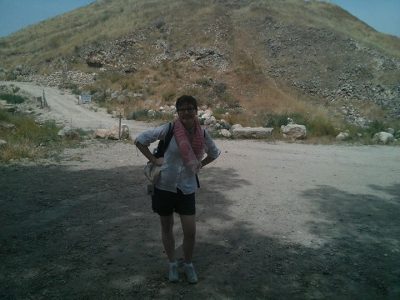Eighteen ostraca were in 1935 at Lachish by J.L. Starkey. Of the eighteen, nine are actually legible. They were found in what was left of a small room under the Eastern outer gate at Lachish. They were found among ash and charcoal, interpreted as the final Babylonian destruction in the year 587 BCE.
At the time of the impending attack by Sennacherib, letters were being sent across the acropolis to different posts, and they were written on pottery shreds in an iron carbon ink, written in pre-exilic Phoenician- Hebrew script. The quality of the script itself my be an indication of how widespread literacy and writing was in the city as they appear to be written by different hands.

The first letter is a list of nine proper names, 7 are biblical and 6 appear in the book of Jeremiah. Six are theophoric names with a YHW included. This could be an indication of how far the worship of Yahweh spread. They may have just been popular names.
Letter three has a reference to the prophet Uriyahu.
Reider translates letter six as “and behold the words of the prophet are not good, liable to loosen hands, to make sink the of the country and the city.” (14)
The ostraca are clues to not only how Lachish was destroyed and Sennacherib came into the area but how the religion of Yahweh had spread. It is also interesting to see how the people of Lachish were thinking about prophets in a time of crisis.

Sources:
Albright, W.F. “A Supplement to Jeremiah: The Lachish Ostraca.” Bulletin of the American School of Oriental Research 61. 1936. [JSTOR]
Reider, Joseph. “The Lachish Letters.” The Jewish Quarterly 29. 1939. [JSTOR]
Wright, Ernest. “Judean Lachish.” The Biblical Archeologist 18. 1955. [JSOTR]